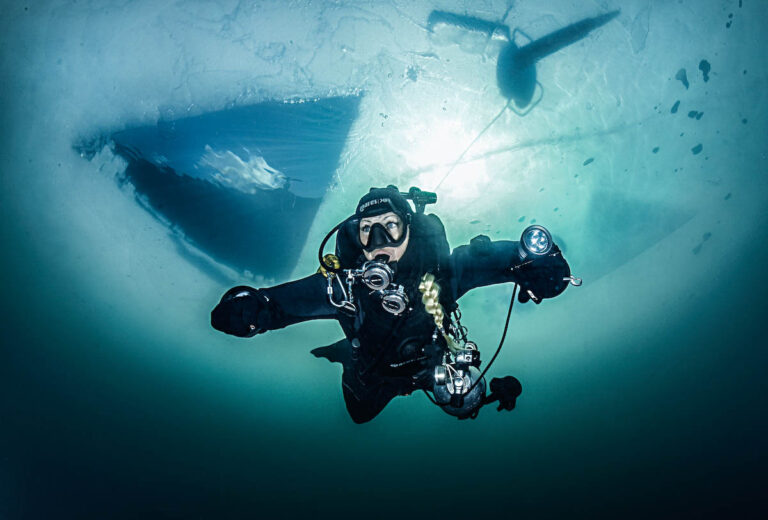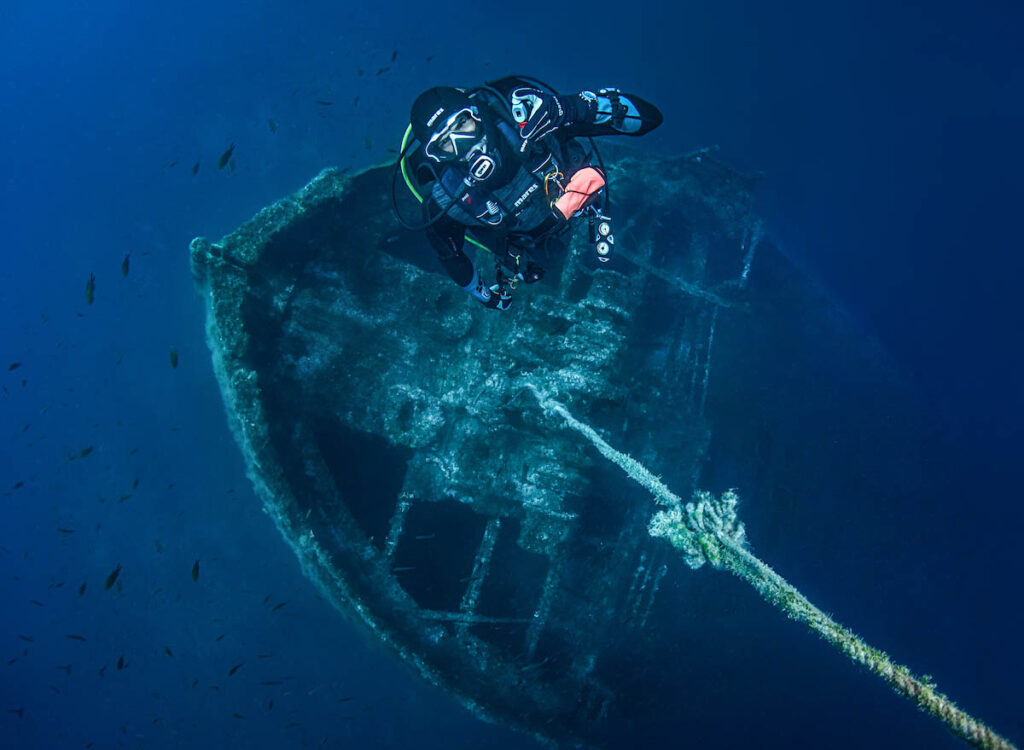When most people think of scuba diving, they imagine warm, tropical waters, colorful coral reefs, and schools of vibrant fish. But for divers who venture into the cold waters of the world, there’s an entirely different realm to explore. Cold-water diving offers dramatic landscapes, unique marine life, and the thrill of conquering environments that test your skills and endurance. In this article, we’ll dive into what makes cold-water diving so rewarding, explore some of the top cold-water destinations around the globe, and highlight the equipment and training you’ll need to thrive in these chilly environments.
Why Cold-Water Diving is Worth the Plunge
Cold-water diving offers a challenging and exciting contrast to tropical diving, with a world of dramatic underwater landscapes, fascinating marine life, and fewer crowds. The rugged environments of cold-water dive sites are often brimming with life adapted to thrive in harsh conditions and are known for their dramatic underwater topography.
From towering kelp forests to ice-covered underwater caves in the Arctic, these dive sites offer an otherworldly experience. The visibility in cold water can often be crystal-clear, especially during winter when plankton levels are lower.
Cold-water environments support a unique array of marine species, large and small. Think of massive sea lions playfully circling you in British Columbia, wolf eels and giant Pacific octopuses hiding in rock crevices, or swimming with orcas and humpback whales in Norway. Additionally, ice diving introduces the experience of diving beneath a sheet of frozen water, where shafts of sunlight pierce the ice, creating ethereal lighting effects.
Beyond the immediate thrill and marine life highlights, cold-water diving rewards those willing to step outside their comfort zone with a deeper sense of accomplishment. The added challenge of managing the colder environment and specialized equipment brings a sense of adventure, making each dive feel like a true expedition.
Top Cold-Water Dive Destinations
Below are six top cold-water diving destinations to add to your scuba diving bucket list.
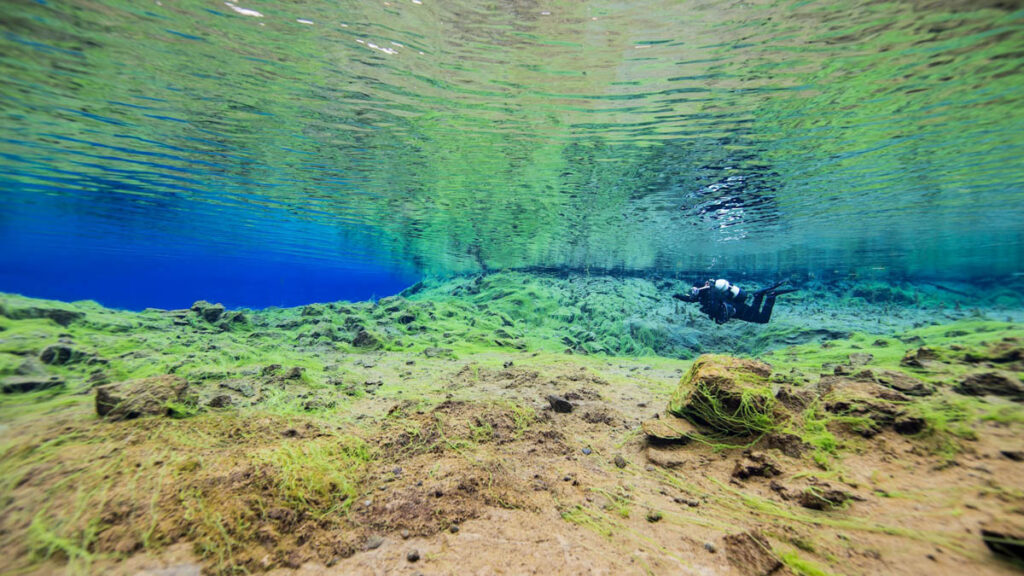
Photo by CHUNGHOI KIM on Unsplash
1. Silfra Fissure, Iceland
One of the most unique dive sites in the world, Silfra Fissure is located in Þingvellir National Park and offers the chance to swim between the tectonic plates of North America and Eurasia. The water here is fed by glacial meltwater, which is filtered through lava rock, resulting in some of the clearest water on Earth. The visibility can exceed an astonishing 100 meters!
While diving at Silfra is the most famous, Iceland also offers other remarkable cold-water diving spots. Garður, located on the Reykjanes Peninsula, offers colorful marine life and geothermal activity, while Strytan near Akureyri boasts a unique underwater geothermal chimney, one of the few places in the world where you can dive near a hydrothermal vent.
- Water temperature: 2-4°C (35-39°F).
- Best time to dive: Year-round.
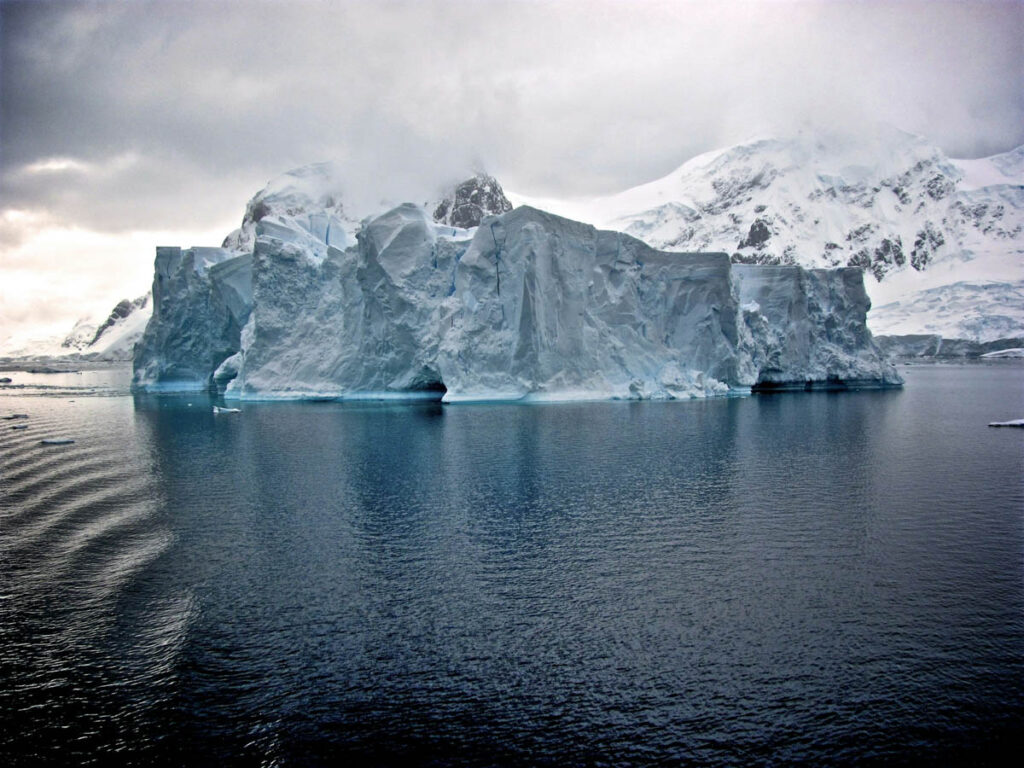
Photo by Jay Ruzesky on Unsplash
2. Antarctica
Diving in Antarctica is a bucket-list adventure for experienced cold-water divers. Ice diving here offers a surreal experience, with massive icebergs, fascinating ice formations, and the chance to see penguins, seals, and even whales.
Most diving expeditions take place around the Antarctic Peninsula and the South Shetland Islands, where nutrient-rich waters attract a wide variety of marine life, including krill, starfish, and unique cold-water invertebrates.
These locations offer relatively sheltered dive sites with awe-inspiring ice walls and vast underwater landscapes. Diving beneath the ice in one of the world’s most remote and pristine environments is truly unforgettable.
- Water temperature: -2 to 2°C (28-36°F).
- Best time to dive: November to March (Antarctic summer).
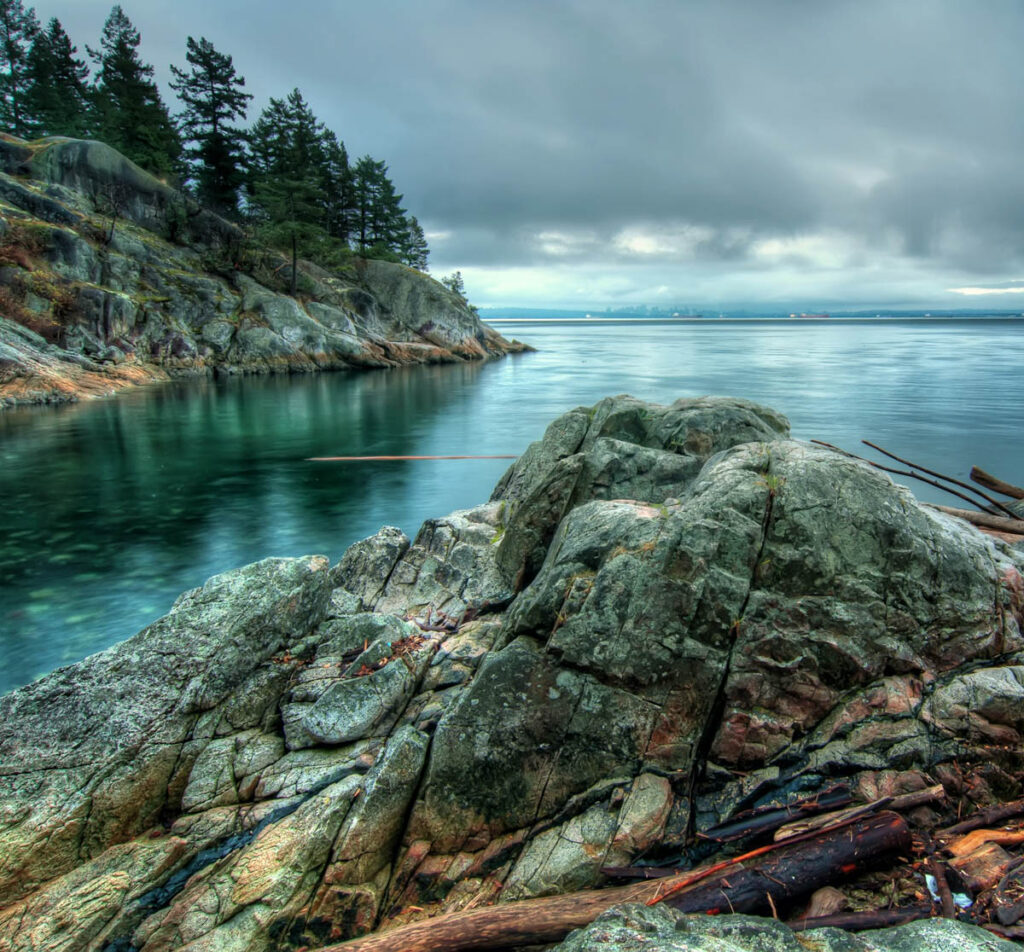
Photo by James Wheeler on Unsplash
3. British Columbia, Canada
British Columbia’s coastline is a cold-water diving paradise, offering some of the best marine biodiversity in the world. The emerald-green waters are home to giant Pacific octopuses, wolf eels, sea lions, and even sixgill sharks. The dive sites around Vancouver Island and the Sunshine Coast feature kelp forests, rocky reefs, and shipwrecks.
A standout feature of diving in Vancouver is God’s Pocket, a remote dive site located in a marine provincial park near Port Hardy. Known for its exceptional underwater visibility and nutrient-rich waters, God’s Pocket is teeming with vibrant marine life, from soft corals and sponges to nudibranchs, rockfish, and wolf eels. Divers may also encounter orcas and sea lions. This area is a hidden gem for cold-water divers seeking tranquility and an abundance of marine species.
- Water temperature: 6-10°C (43-50°F).
- Best time to dive: Spring (March to May) and Autumn (September to November).
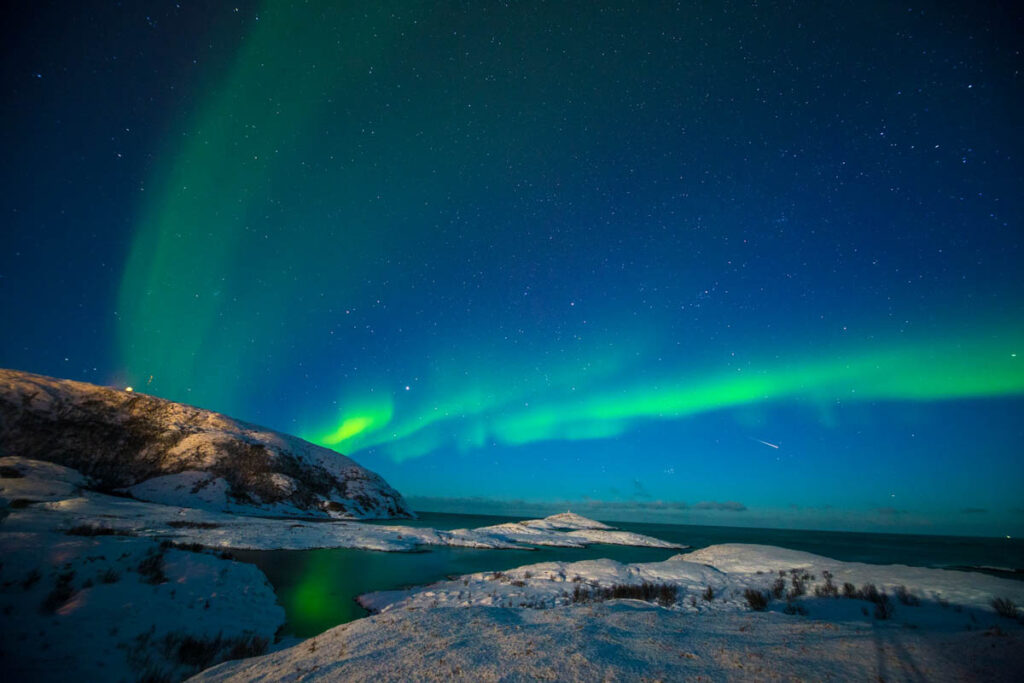
Photo by Lightscape on Unsplash
4. Tromsø, Norway
Tromsø is one of the few places in the world where snorkeling and freediving with orcas in the wild is possible. This unique experience takes place during the Arctic winter, from November to January, when orcas gather in the fjords to hunt vast herring bait balls.
Participants can observe these incredible creatures up close, offering a rare glimpse of their natural behavior, and can spot humpback whales as well. By night, you can witness the beautiful Northern Lights.
This experience typically takes place by liveaboard with an accompanying dive skiff. Snorkelers wear dry suits to handle the cold Arctic waters, which range between 2-6°C (36-43°F), though the wind chill on the dive skiff can plunge the air temperature down to -15 °C (5 °F). Make sure you wear woolen base layers under your dry suit to minimize the cold.
- Water temperature: 2-6°C (36-43°F).
- Best time to dive: October to January.
5. Scapa Flow, Scotland
Scapa Flow is one of the world’s premier wreck diving locations, offering divers the chance to explore a fleet of sunken German warships from World War I. In 1919, 74 ships from the German High Seas Fleet were scuttled here, and several of these wrecks remain intact today, preserved by the cold waters.
Key wrecks include the SMS Karlsruhe, a light cruiser sitting at around 26 meters, and the SMS Kronprinz Wilhelm, a massive battleship lying at 38 meters, both of which are covered in anemones and sea life.
The wrecks, along with the historical significance of the site, make Scapa Flow a must-visit for wreck enthusiasts. In addition to the German ships, you can explore more recent wrecks like the James Barrie, a trawler that sank in 1969, adding to the rich diversity of dive sites.
- Water temperature: 5-10°C (41-50°F).
- Best time to dive: April to October.
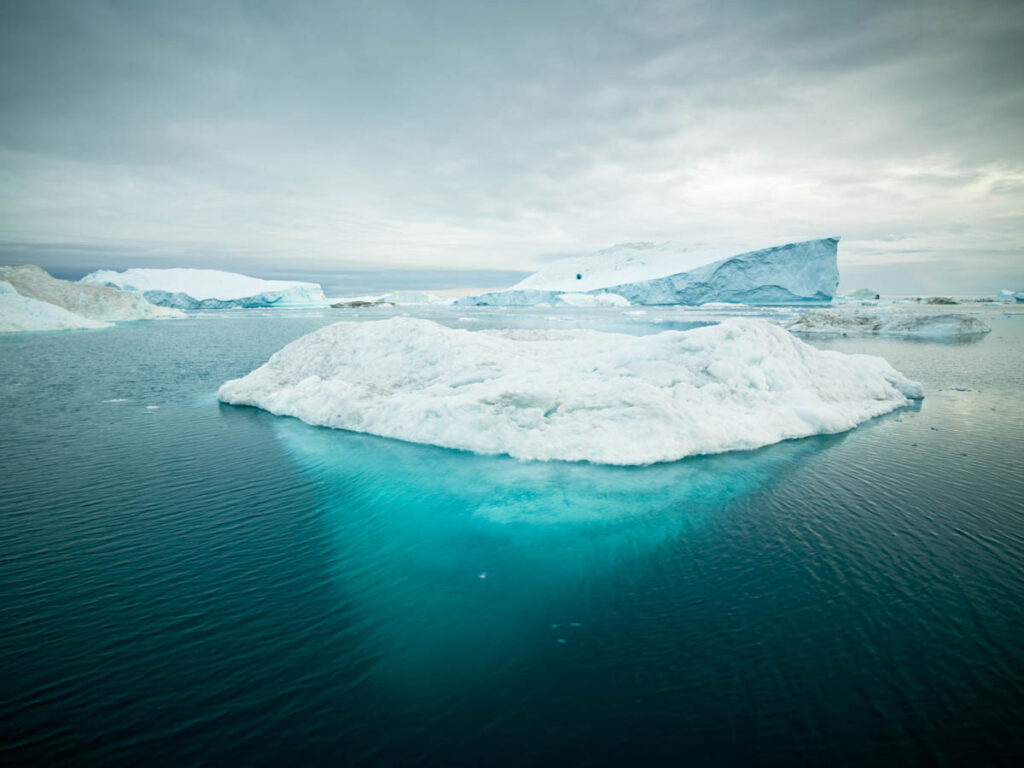
Photo by Alexander Hafemann on Unsplash
6. Tasiilaq, Greenland
For the ultimate cold-water diving experience, Greenland offers both iceberg diving and the chance to explore the frozen underwater world of the Arctic. Diving among towering icebergs is surreal, and the frozen formations beneath the surface are as impressive as those above. Most diving in Greenland is conducted via boat, as shore diving is limited due to the remote and rugged coastline.
Liveaboard expeditions are also an option, especially for those wanting to explore multiple dive sites across the icy fjords. These expeditions allow divers to reach remote, pristine locations where the waters are busy with seals, Arctic char, and even passing whales. Greenland’s remote beauty above and below the water makes it a truly extraordinary destination.
- Water temperature: -2 to 4°C (28-39°F).
- Best time to dive: June to September.
7. Shiretoko Peninsula, Japan
Located in Hokkaido, the Shiretoko Peninsula offers an unexpected ice diving experience in Japan. In winter, drift ice from the Sea of Okhotsk covers the coastline, creating a unique diving environment beneath the ice. Divers can explore a world of frozen formations while encountering sea angels (tiny, translucent mollusks), jellyfish, and various cold-water fish.
After you’ve had your fill of diving in Japan, the Shiretoko Peninsula offers plenty of other winter activities, including wildlife tours to see eagles, foxes, and deer, and snowshoeing through Shiretoko National Park, a UNESCO World Heritage site. Visitors can also relax in natural hot springs and enjoy local seafood, including fresh crab, a regional delicacy.
- Water temperature: -1 to 2°C (30-36°F).
- Best time to dive: February to March (drift ice season).
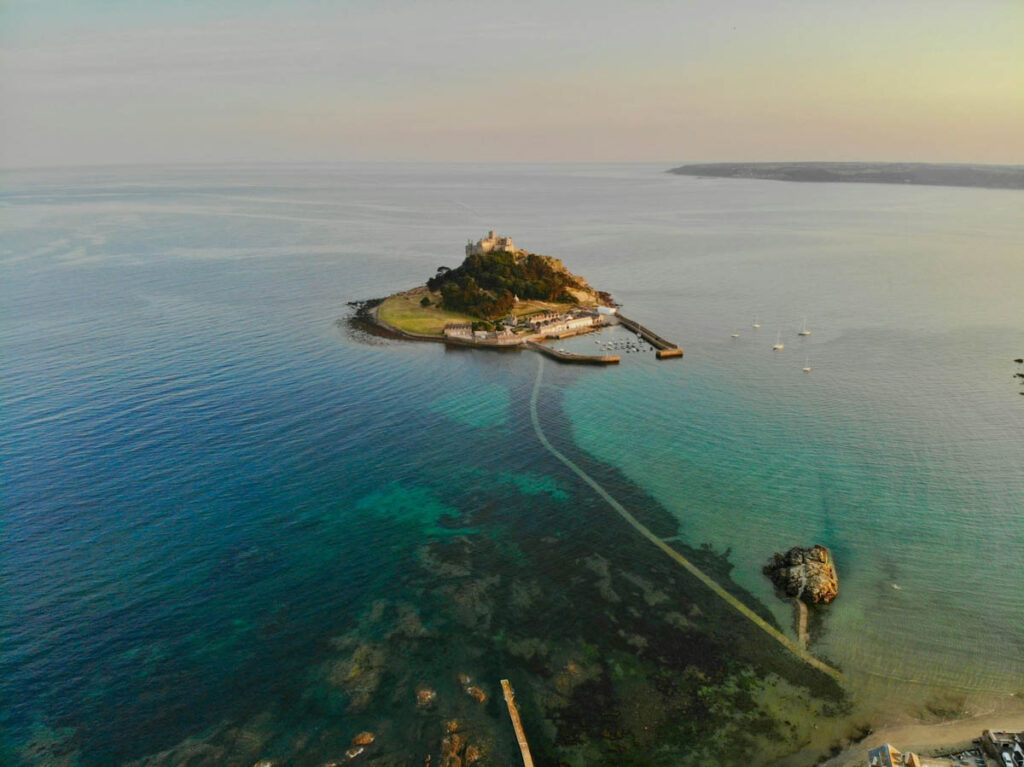
Photo by Benjamin Elliott on Unsplash
7. Cornwall, England
While Cornwall is better known for its rugged coastline and popular surf spots, it also offers some fantastic cold-water diving opportunities. The waters off the Cornish coast are rich with marine life and feature fascinating underwater landscapes, from rocky reefs to shipwrecks.
Cornwall’s relatively mild winter temperatures make it a more accessible cold-water destination than some places. If you want to dip your toes into cold-water diving without getting too cold, start diving in Cornwall during summer (June to August) and keep going into the chill of winter (December to February).
One of the most famous dive sites in Cornwall is Porthkerris, where divers can explore the Manacles, a series of reefs known for their dramatic underwater topography and diverse marine life, including lobsters, crabs, and a variety of fish species. You may even spot seals, which are common in these waters.
Another beautiful dive site is Lamorna Cove near Penzance, where you can go shore diving among rocky outcrops just a few paces from the picture-perfect beach. This is a great spot for a peaceful winter dive.
- Water temperature: 9 °C in winter (48 °F), 16 °C in summer (61°F)
- Best time to dive: April to October
Equipment and Training for Cold-Water Diving
Cold-water diving isn’t something you are going to do just after getting your diving license. It introduces challenges such as handling cold temperatures, additional equipment, and managing buoyancy with a drysuit. It requires specialized equipment and training to ensure your safety and comfort.
A drysuit is essential, providing thermal insulation and keeping you dry in water temperatures that would be unbearable in a wetsuit. Divers also need thick gloves and hoods, and in extremely cold environments, heated undergarments are recommended. Regulators designed for cold water are also sometimes required to prevent freezing, free flow, and other malfunctions.
There are several courses designed to help you gain confidence and skills for cold-water environments. A drysuit diving specialty teaches the skills needed to dive comfortably in a drysuit, including buoyancy control. After completing that specialty, get some cold-water dives under your belt and progress from there.
Challenging cold-water dive destinations such as Antarctica and the Arctic, usually require divers to be experienced in cold water and dry-suit diving and to have logged at least 30 drysuit dives. For divers looking to explore the frozen underwater world, an ice diving course covers all aspects of ice diving, from preparation to safety.



